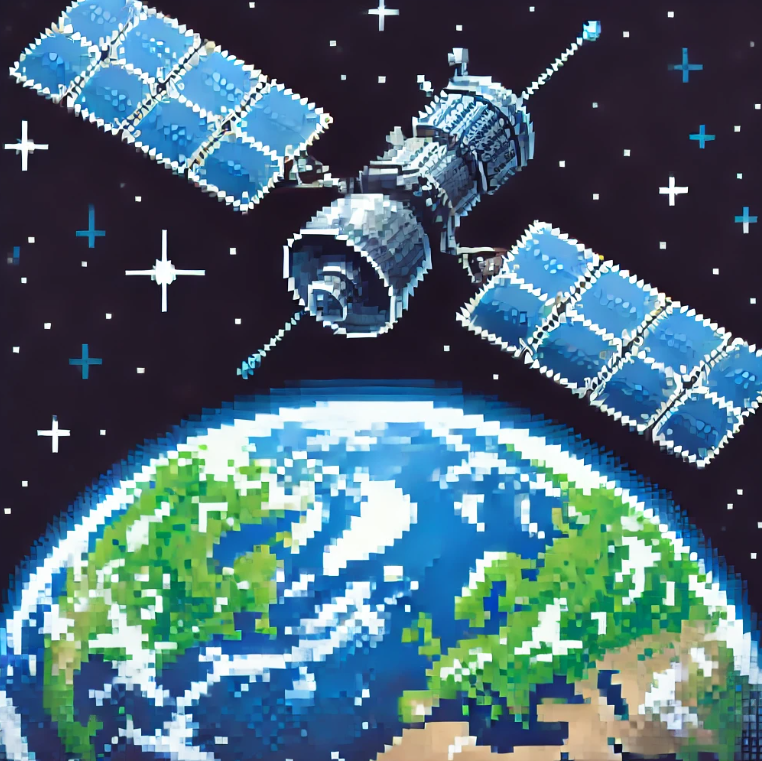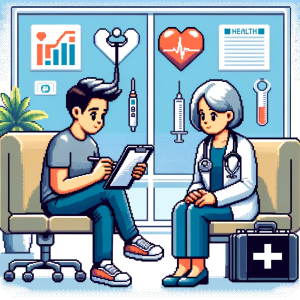
How Satellites Could Revolutionize the Fight Against Chronic Diseases
The global health landscape has been shaped by noncommunicable diseases (NCDs) like cardiovascular disease, cancer, chronic respiratory disease, and diabetes. These four conditions alone account for over 80% of all premature deaths globally, with the majority of fatalities occurring in low- and middle-income countries. Despite countless initiatives to reduce the burden of NCDs, progress has been slow. But new hope is emerging from an unexpected source: the skies above.
Recent advancements in satellite imagery technology and artificial intelligence (AI) offer unprecedented opportunities to tackle these global health threats. The question is: how can we harness the power of satellites to improve public health outcomes? A systematic review of existing research provides key insights into the potential of satellite data to monitor, prevent, and ultimately reduce the burden of NCDs.
The Role of Satellites in NCD Research
Imagine a world where public health professionals can monitor environmental risk factors that contribute to chronic diseases in real-time, across entire continents. This is no longer science fiction. Satellite imagery provides a bird’s-eye view of the Earth, capturing data on air pollution, temperature, greenspace, and even light exposure at night—all known contributors to diseases like heart disease and cancer.
This technology is already being used in innovative ways. In fact, over 90% of the studies included in the systematic review found a significant relationship between satellite data and NCD outcomes. For example, researchers have linked air pollution detected via satellites to increased risk of chronic respiratory diseases and cardiovascular conditions. Similarly, the presence of greenspace—measured from above—has been associated with better overall health outcomes, particularly in managing stress and respiratory health.
While traditional data collection methods, like surveys and ground-based monitoring stations, have been essential tools in public health research, they often fall short. They are limited in scope, time-consuming, and can miss significant regional variations in environmental factors. Satellite imagery, by contrast, is open source and available on a global scale. It provides a more accurate, comprehensive view of the environmental landscape, free from many of the limitations that plague traditional methods.
Bridging the Data Gap in Low- and Middle-Income Countries
One of the most exciting potentials of satellite technology lies in its ability to overcome data shortages in low- and middle-income countries (LMICs), where NCD mortality rates are highest. Historically, these regions have struggled with limited access to health data, making it difficult to track disease trends and implement effective interventions. Satellites offer a way to fill this gap.
With over 400 Earth observation satellites currently orbiting the planet, public health professionals can now access critical environmental data from even the most remote areas. For instance, satellite imagery can reveal patterns of air pollution and deforestation in LMICs, helping policymakers identify high-risk areas where resources and prevention efforts should be concentrated.
However, despite this promise, the review highlights a striking disparity: nearly three-quarters of the existing studies were conducted in high-income countries, leaving the populations most at risk largely unstudied. The challenge now is to expand this technology to where it’s needed most and train local researchers and policymakers in the use of satellite data for public health purposes.
Harnessing the Power of AI
One of the key advancements making satellite data more accessible and useful is artificial intelligence. AI can rapidly process vast amounts of satellite imagery, extracting meaningful patterns that would otherwise go unnoticed. This is especially useful when dealing with NCDs, which are influenced by a complex web of environmental factors that often interact in subtle ways.
For example, AI-powered models can analyze air pollution levels, greenspace distribution, and light exposure at night to predict areas where certain NCDs are likely to be more prevalent. In one study, researchers used convolutional neural networks (CNNs)—a type of AI model—to examine satellite imagery and predict cancer risk based on environmental factors. Such innovations are not just helpful for understanding disease trends but also for predicting future health risks and planning targeted interventions.
The integration of satellite data and AI represents a major leap forward in the fight against NCDs. But for this potential to be fully realized, more studies need to be conducted across diverse geographic and socio-economic settings. Additionally, public health practitioners and researchers need to be equipped with the skills to interpret and act on the insights generated by these advanced tools.
Practical Implications for Public Health
So, what does this mean for public health professionals working on the ground? How can this new wealth of satellite-derived data translate into actionable policies and programs?
First, satellite data allows for more precise targeting of interventions. For instance, if satellite imagery shows high levels of air pollution in a specific region, local health authorities can prioritize pollution-reduction strategies or focus educational efforts on protecting vulnerable populations from respiratory issues. Similarly, satellite data on greenspace can help urban planners design healthier cities by incorporating more parks and natural areas, which have been shown to improve mental and physical health.
Second, satellite technology can improve disease surveillance. By monitoring environmental changes in real-time, public health teams can respond faster to emerging health threats. This is especially important in low-resource settings, where early detection and intervention can save lives.
Finally, satellite imagery has the potential to revolutionize global health equity. As more LMICs gain access to satellite data, they will be better positioned to tackle NCDs and improve population health outcomes. This technology levels the playing field, giving policymakers and health professionals in under-resourced areas the tools they need to make data-driven decisions that can have a lasting impact.
Join the Conversation
What excites you most about the use of satellite technology in public health? Have you seen innovative uses of satellite data in your community or field of work? Share your thoughts, experiences, or ideas in the comments below or on social media using #SatelliteForHealth.
Be Part of the Change – Get Weekly Updates!
Stay informed and connected. Subscribe for free and share this blog to make a difference in public health with others. If you liked this blog, please share it! Your referrals help This Week in Public Health reach new readers.



